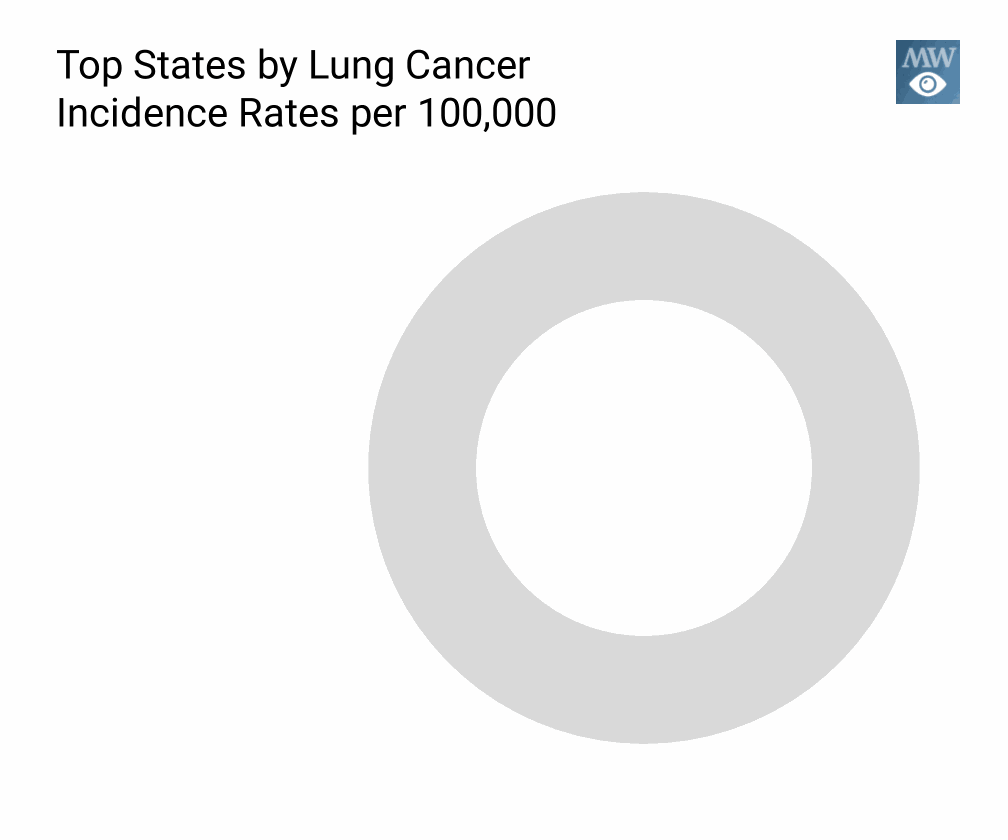Inhaling asbestos on the job or at home can lead to the development of cancerous tissue within the lungs over time. As asbestos fibers split into smaller portions, they eventually become so small that they get lodged in lung tissue or start interfering with the process of replenishing cells, known as mitosis.
Lung Cancer from Asbestos
Annually 30,000 people die of lung cancer caused by work-related asbestos exposure. For those who work in these environments from the mid-1950s onwards such as asbestos mines, and textile and mill industries there is a greater risk of developing lung cancer than in other parts of the country.
For acute or persistent asbestos particle exposure linked to cancer of the lung, there are twice the odds that someone would develop this type rather than mesothelioma.
American medical experts agree that lung cancer and asbestos are directly related. The frequency and duration of asbestos exposure are critical health factors in both causing death due to this disease, as well as aggravating it; especially when combined with smoking habits.

The following types of workplaces are most likely to be responsible for lung cancer from asbestos exposure:
- Steel mills
- Oil refineries
- Oil fields
- Tire manufacturers
- Rubber plants
- Automobile mechanics
- Construction
- Shipyards
- Pipe workers
- Flooring, tile, and roofing
For veterans, the risk factor of developing lung cancer after asbestos exposure typically results from frequent involvement with:
- Navy shipyards
- Heavy equipment
- Aircraft manufacturing
- Caterpillar backhoes
- Manufacturing plants
- Heat resistance properties
- Repairing tanks
- Sleeping quarters
Nearly 30,000 lung cancer cases diagnosed each year are attributed to asbestos exposure suffered at the workplace.
Asbestos Lung Cancer and Smoking
Tobacco users working in these occupations are at an even greater risk for lung cancer originating from asbestos exposure on the job. People who smoke are 50 to 90 times more likely than non-smokers to develop lung cancer from asbestos exposure.
Whether or not you are a smoker, you have every right to seek damages from any party whose asbestos exposure helped cause your lung cancer.
Link Between Talcum Powder Use and Lung Cancer

Studies and legal cases have recently shed light on the potential link between talcum powder use and lung cancer, specifically when the talc product is contaminated with asbestos. Asbestos is a well-established carcinogen, which can easily be inhaled during the use of talc-based products, which has the potential to increase the risk of lung cancer.
Those who have used talcum powder products regularly and have been diagnosed with lung cancer should be aware of this connection. These individuals should consult with our legal professionals to explore potential options for compensation.
Knowing the risks is essential to make an informed decision about both your health and pursuing your legal rights.
Different Types of Asbestos Lung Cancers
Asbestos exposure can cause you to develop either of the two major types of lung cancer:
- Non-Small Cell Lung Cancer
- Small Cell Lung Cancer
Non-small cell lung cancer (NSCLC) accounts for approximately 80 to 85 percent of all lung cancer cells.
The three main varieties of NSCLC to be aware of are:
- Adenocarcinoma
- Squamous cell carcinoma
- Large cell carcinoma
The most common NSCLC to affect male workers and other victims exposed to asbestos is squamous cell carcinoma.
Small cell lung cancer (SCLC) accounts for about 10 to 15 percent of all lung cancers.
The three main varieties of SCLC to be aware of are:
- Small cell carcinoma
- Mixed small-cell or large-cell carcinoma
- Combined small cell carcinoma.
Small cell carcinoma is often referred to as Oat Cell Cancer, the most common variety of SCLC to develop.
Latency Period of Asbestos Lung Cancer
The latency period for an asbestos lung cancer case typically is 10 to 35 years after first exposure to the microscopic fibers. Owing to this long latency period, symptoms of exposure may be confused with less critical ailments and the crucial diagnosis put back.
The life expectancy of asbestos-related lung cancer can vary based on prior health, the primary site of the cancerous growth, and so forth. The unknown causes and wide variance in the diagnosis of lung cancers caused by asbestos make assembling any life expectancy data on them alone difficult.
Symptoms of Asbestos-Related Related Lung Cancer
Symptoms for asbestos-related lung cancer can take 10-35 years to appear in victims who have been exposed to the microscopic fibers.
Some of the most common symptoms include:
- Chronic fatigue
- Chest pain, tightness
- Shortness of breath
- Difficulty swallowing
- Persistent dry cough
- Weight loss or loss of appetite
Treatment Options for Asbestos-Related Cancer
Treatment options vary on the patient’s health, the tumor’s size and location, and other factors. Surgical removal of partial lung lobes, complete lung lobes, or an entire lung is possible.
Caught early enough, surgery in combination with chemotherapy and radiation is considered the most effective treatment. Diet and lifestyle changes may also be recommended.
Yes. The negligent companies responsible for the asbestos exposure reported in your case may be ordered to compensate you for damages associated with any health expenses, pain, or emotional turmoil you or your family members suffered as a result of the lung cancer. If you have an asbestos-related work history predating 1982, you may qualify to receive additional compensation from asbestos trust funds. If you or someone close to you has been diagnosed with lung cancer or mesothelioma from asbestos exposure, we are here for you, for immediate assistance contact us anytime for a free and confidential case evaluation. Our legal team will handle your asbestos case and identify all the potentially liable parties and trust funds available.




